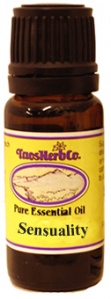Address: 710 Paseo del Pueblo Sur, Suite J. Taos, NM 87571 � Map � Call 1.800.353.1991 or 575.758.1991
We provide hundreds of products from organic, sustainably wild-crafted and superior quality herbs to help you explore natural healing options. Our YERBA Hair Care is known across the nation for promoting healthy hair without buildup. Yucca and globemallow have been used for centuries in the Southwest for shiny, healthy hair. Our products are never tested on animals. Our ceremonial Sacred Herbs, Smudge Sticks and Incense Resins are of the highest quality. Many are made exclusively for Taos Herb Company by our Native American friends.
Image Copyright: www.123rf.com/profile_solerf, Copyright: kesu87 / 123RF Stock Photo, Copyright: olegdudko / 123RF Stock Photo, Copyright: btwcapture / 123RF Stock Photo
Statements on this web site have not been evaluated by the Food and Drug Administration. These products are not intended to diagnose, treat, cure, or prevent any disease.
All images, text and content Copyright, © 2017 Taos Herb Company. All Rights Reserved
 Aromatherapy is the practice of using essential oils to support balance and harmony to your body and emotions. Essential oils are concentrated essences of plant material and are chosen for their pleasing scents as well as for their individual characteristics.
Aromatherapy is the practice of using essential oils to support balance and harmony to your body and emotions. Essential oils are concentrated essences of plant material and are chosen for their pleasing scents as well as for their individual characteristics.  Essential oils are very complex in their molecular structure, and very powerful. Aside from the pleasing aromas given to us from nature, they have many other traditional applications.
Essential oils are very complex in their molecular structure, and very powerful. Aside from the pleasing aromas given to us from nature, they have many other traditional applications. When an essential oil is inhaled, various neurochemicals are released in the brain and the inhaler experiences a physiological change in the body, mind and spirit. In her book The Essential Oils Book: Blends for Mind & Body, Colleen K. Dodt notes that the effects of essential oils are both scientific and experiential. She gives the example of the calming influence in the body when lavender is inhaled, as serotonin is released from the raphe nucleus of the brain.
When an essential oil is inhaled, various neurochemicals are released in the brain and the inhaler experiences a physiological change in the body, mind and spirit. In her book The Essential Oils Book: Blends for Mind & Body, Colleen K. Dodt notes that the effects of essential oils are both scientific and experiential. She gives the example of the calming influence in the body when lavender is inhaled, as serotonin is released from the raphe nucleus of the brain.